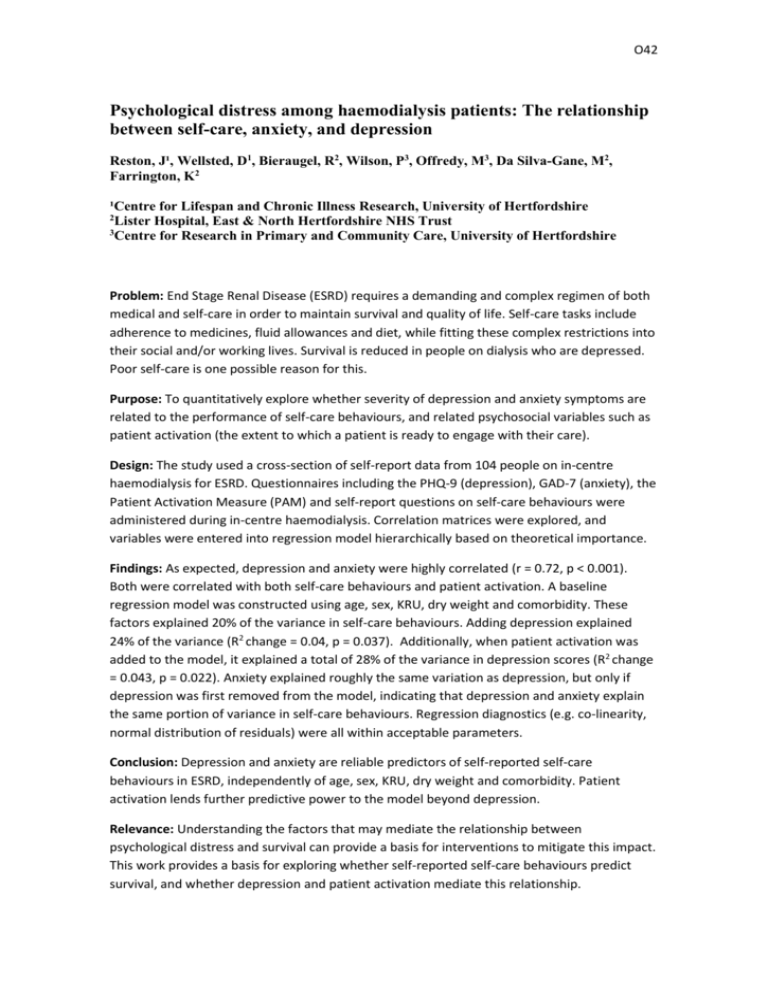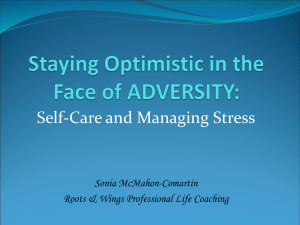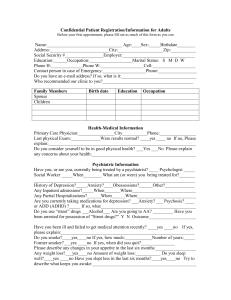
O42
Psychological distress among haemodialysis patients: The relationship
between self-care, anxiety, and depression
Reston, J¹, Wellsted, D1, Bieraugel, R2, Wilson, P3, Offredy, M3, Da Silva-Gane, M2,
Farrington, K2
¹Centre for Lifespan and Chronic Illness Research, University of Hertfordshire
2
Lister Hospital, East & North Hertfordshire NHS Trust
3
Centre for Research in Primary and Community Care, University of Hertfordshire
Problem: End Stage Renal Disease (ESRD) requires a demanding and complex regimen of both
medical and self-care in order to maintain survival and quality of life. Self-care tasks include
adherence to medicines, fluid allowances and diet, while fitting these complex restrictions into
their social and/or working lives. Survival is reduced in people on dialysis who are depressed.
Poor self-care is one possible reason for this.
Purpose: To quantitatively explore whether severity of depression and anxiety symptoms are
related to the performance of self-care behaviours, and related psychosocial variables such as
patient activation (the extent to which a patient is ready to engage with their care).
Design: The study used a cross-section of self-report data from 104 people on in-centre
haemodialysis for ESRD. Questionnaires including the PHQ-9 (depression), GAD-7 (anxiety), the
Patient Activation Measure (PAM) and self-report questions on self-care behaviours were
administered during in-centre haemodialysis. Correlation matrices were explored, and
variables were entered into regression model hierarchically based on theoretical importance.
Findings: As expected, depression and anxiety were highly correlated (r = 0.72, p < 0.001).
Both were correlated with both self-care behaviours and patient activation. A baseline
regression model was constructed using age, sex, KRU, dry weight and comorbidity. These
factors explained 20% of the variance in self-care behaviours. Adding depression explained
24% of the variance (R2 change = 0.04, p = 0.037). Additionally, when patient activation was
added to the model, it explained a total of 28% of the variance in depression scores (R2 change
= 0.043, p = 0.022). Anxiety explained roughly the same variation as depression, but only if
depression was first removed from the model, indicating that depression and anxiety explain
the same portion of variance in self-care behaviours. Regression diagnostics (e.g. co-linearity,
normal distribution of residuals) were all within acceptable parameters.
Conclusion: Depression and anxiety are reliable predictors of self-reported self-care
behaviours in ESRD, independently of age, sex, KRU, dry weight and comorbidity. Patient
activation lends further predictive power to the model beyond depression.
Relevance: Understanding the factors that may mediate the relationship between
psychological distress and survival can provide a basis for interventions to mitigate this impact.
This work provides a basis for exploring whether self-reported self-care behaviours predict
survival, and whether depression and patient activation mediate this relationship.







